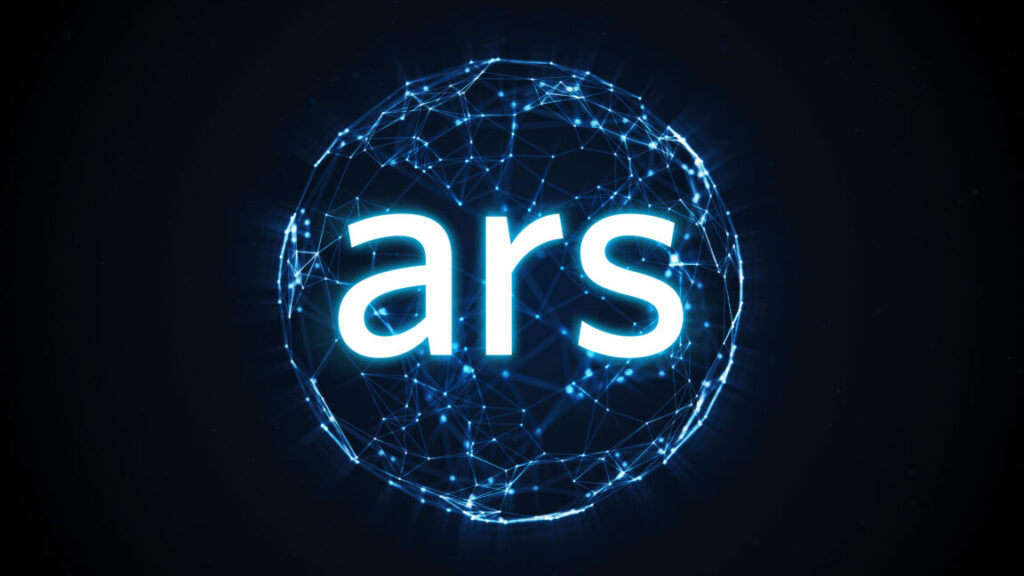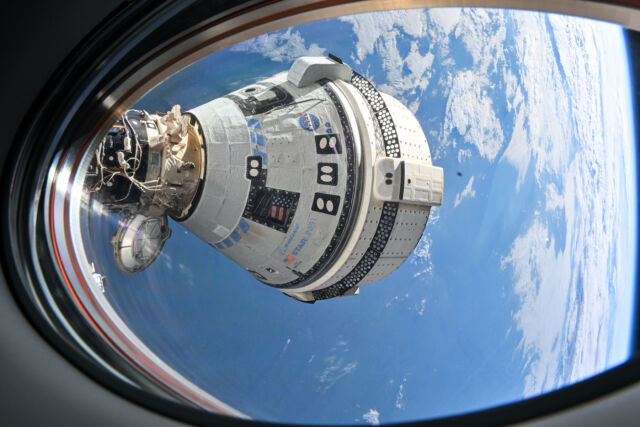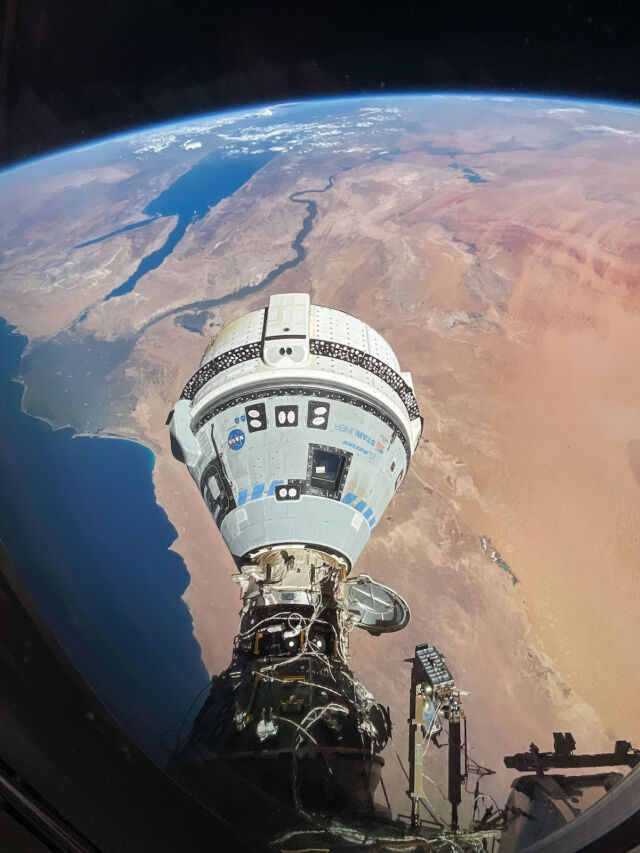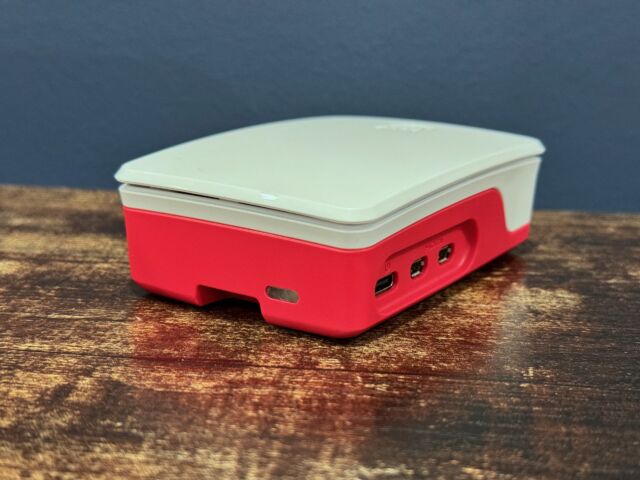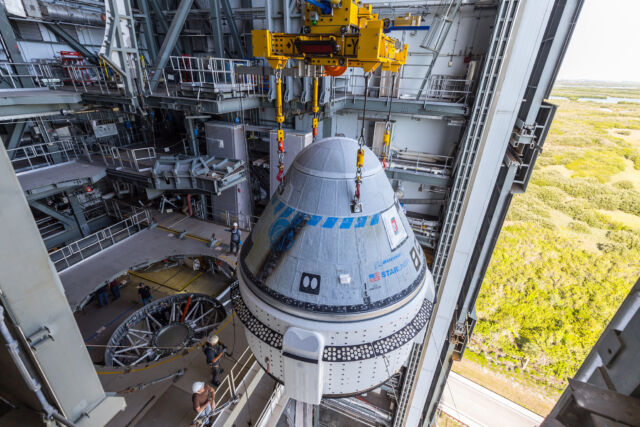The 20 most-read stories of 2024 on Ars Technica
Ars looks back at the top stories of the year.
Credit: Aurich Lawson | Getty Images
Hey, look at that! Another year has flown by, and I suspect many people would say “good riddance” to 2024.
The 2020s have been quite the decade so far. No matter what insanity has transpired by a particular December 31, the following year has shown up and promptly said, “Hold my beer.”
The biggest news at Ars in 2024 was our first site redesign in nearly a decade. We’re proud of Ars 9.0 (we’re up to 9.0.3 now), and we have continued to make changes based on your feedback. The best kind of feedback, however, is your clicks. Those clicks power this recap, so read on to learn which stories our readers found especially compelling.
20. NASA is about to make its most important safety decision in nearly a generation
Boeing’s Starliner spacecraft, seen docked at the International Space Station through the window of a SpaceX Dragon spacecraft. Credit: NASA
In June, NASA astronauts Butch Wilmore and Suni Williams were sent into space for a mission slated to last a little over a week. Six months later, they are still orbiting this terrestrial ball.
The two retired naval test pilots were the first people to catch a ride to orbit on the Boeing Starliner. Unfortunately for them (and Boeing), Starliner developed problems with its propulsion system.
Figuring out how to get them back down to Earth was arguably the biggest safety decision NASA has had to make in decades. Stephen Clark unpacked the situation, looking at how NASA’s culture of safety has evolved since the Challenger accident.
19. macOS 15 Sequoia: The Ars Technica review

Credit: Apple
One constant in our year-end recaps is operating system reviews. During 2024, Apple’s annual macOS release was the sole OS review to hit the top 20.
Touted as “the AI one,” most of the Apple Intelligence features didn’t show up until macOS 15.1 was released. The overall verdict on Sequoia? 2024’s installment of macOS was a solid update. Andrew Cunningham liked the new window tiling, mostly unchanged backward compatibility, and all of the minor but useful tweaks to many of the built-in apps.
18. What we know about the xz Utils backdoor that almost infected the world

Credit: Getty Images
xz Utils is a popular open-source data-compression utility for *nix OSes. In late March, one developer floored developers everywhere when he revealed a backdoor in the utility. The malicious code planted in versions 5.6.0 and 5.6.1 targeted encrypted SSH connections.
Thankfully, the malicious code was caught before it was merged into Debian and Red Hat. Years in the making and described the “best executed supply chain attack” by one cryptography engineer, the effort came thisclose to success. Dan Goodin explains what we know and how this might have happened.
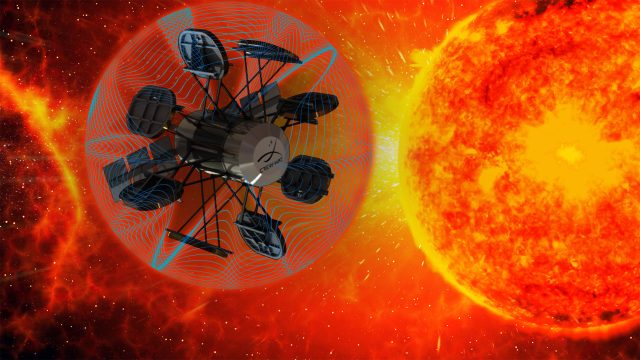
Credit: Aurich Lawson | Getty Images | NASA
One of the problems humankind faces as we climb out of Earth’s gravitational well is cosmic radiation. On a long voyage to Mars, the crew will need to be protected against solar storms and other space radiation. Right now, ensuring that level of protection would require tons of shielding material, but that may change.
Active shielding was proposed in the 1960s, but the initial research didn’t result in any working prototypes. Now, the ESA and NASA are looking at magnetic fields and electrostatic shields to protect space travelers. Researchers have built and tested small-scale models of their electrostatic shields, and the ESA is working on superconducting magnets.
16. I added a ratgdo to my garage door, and I don’t know why I waited so long

Messing around with the electronics in our dwellings is part of the Ars DNA. In 1998, we were overclocking our Celerons. In 2024, we’re messing with our garage door openers.
Senior Tech Editor Lee Hutchinson hates looking out the back window to see if he remembered to close his garage door, so he stuck a Raspberry Pi out there that would email him every time the garage door opened or closed. Unfortunately for Lee and his Raspberry Pi, Houston is hot and humid for approximately 10 months out of the year, so his tiny computer gave up the ghost after one 98° day too many.
Instead of using the MyQ app that came with his garage door opener, he grabbed a ratgdo—a tiny little board with built-in Wi-Fi that gets wired into the garage door opener’s terminals. The result? A daily experience of the magic of functional home automation.
15. Boston Dynamics’ new humanoid moves like no robot you’ve ever seen
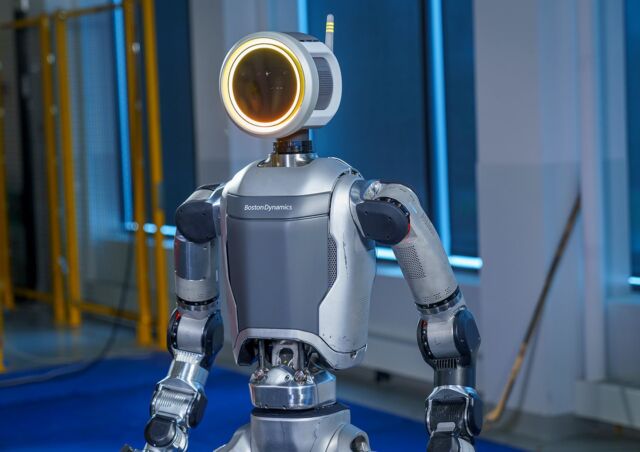
Credit: Boston Dynamics
Moves like Jagger? Not quite, but the latest Atlas robot from Boston Dynamics moves like it could bust a move out on the dance floor.
This Atlas uses electricity instead of hydraulics. While the old Atlas was capable of lifting heavy objects and traveling across all kinds of terrain, the heavy and complicated hydraulics made it massive. The all-electric version can move in ways that its predecessor couldn’t, as there are no hydraulic lines to worry about. As a result, the Atlas has an uncanny range of motion.
Hyundai was the first company to test Atlas in a manufacturing environment.
14. Unpatchable vulnerability in Apple chip leaks secret encryption keys
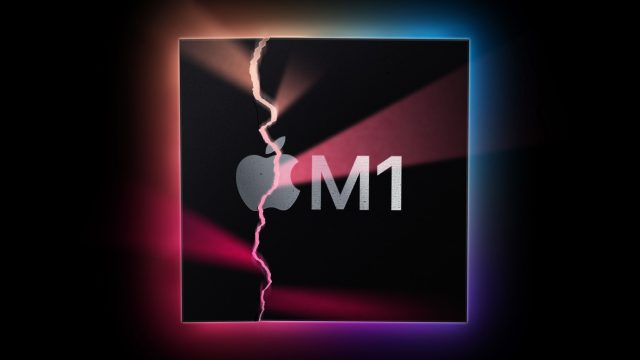
Credit: Aurich Lawson | Apple
Even though CPU manufacturers have been baking security features into their silicon for some time, malicious actors and researchers keep poking and prodding, looking for security flaws. A group of researchers found a dreaded unpatchable vulnerability in Apple silicon, one that doesn’t even require root access.
The attack, dubbed GoFetch, works against classical and hardened encryption algorithms and can extract a 2048-bit RSA key in less than an hour. It takes advantage of the chips’ data memory-dependent prefetcher, which optimizes performance by reducing latency between the CPU and RAM. Since you can’t patch silicon, the only solution is adding defenses to cryptographic code, and those come with performance penalties.
13. Air Canada must honor refund policy invented by airline’s chatbot

Depending on how you feel about interacting with actual humans for customer support, the rise of AI customer-service chatbots has been either a boon or a curse. An example of the latter comes courtesy of Air Canada.
Jake Moffatt had to fly from Vancouver to Toronto for his grandmother’s funeral, so he asked Air Canada’s chatbot to explain the airline’s bereavement policy. The chatbot gave Moffatt incorrect instructions, telling him that he could be reimbursed for a reduced bereavement rate up to 90 days of the ticket being issued. Unfortunately for everyone involved, this was not the policy of Air Canada.
The airline refused to honor the policy spelled out by its chatbot, at least until Moffatt took them to small claims court and won. When we last checked, the chatbot was no longer active.
12. In rare move from printing industry, HP actually has a decent idea
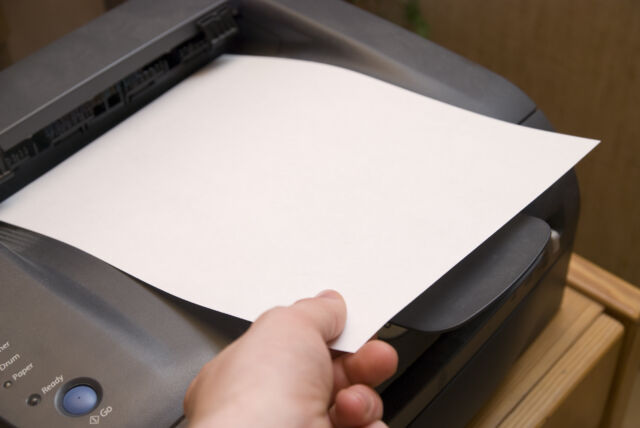
Credit: Getty
There are some days that I long for my old Stylewriter printer. It was slow and dumb as a rock, but it more than adequately performed the function of putting ink on paper. I now have a multifunction printer/scanner/fax that suffers print quality problems partly because of how little it’s used. It might be different if I wanted to spend over $300 for a set of HP-branded toner cartridges instead of roughly $80 for generic ones, but I’d rather live with faded printouts.
HP has rightfully been the target of ire from consumers, and as Scharon pointed out, that company has been a major cause of broken trust between printer OEMs and consumers. So we were all surprised when HP came up with an idea that could simplify and speed up some print jobs. Having a new feature that would improve the printing feature is so much better than, say, using DRM to ensure third-party products don’t function correctly with HP printers.
11. It turns out NASA’s Mars helicopter was much more revolutionary than we knew

Credit: NASA/JPL
Ingenuity made its first flight on Mars in April 2021. Seventy-two flights and nearly three years later, the small helicopter made its last flight. As Eric Berger noted, Ingenuity stood out from other NASA hardware in two ways. First, it proved that powered flight on other worlds was a possibility. Despite Mars’ very thin atmosphere, the copter was able to zoom around on its carbon fiber blades.
More importantly, Ingenuity was built with commercial, off-the-shelf hardware. The success of its mission has opened the door to other possibilities, like flying a nuclear-powered drone through the thick, nitrogen-heavy atmosphere of Titan.
10. After Russian ship docks to space station, astronauts report a foul smell
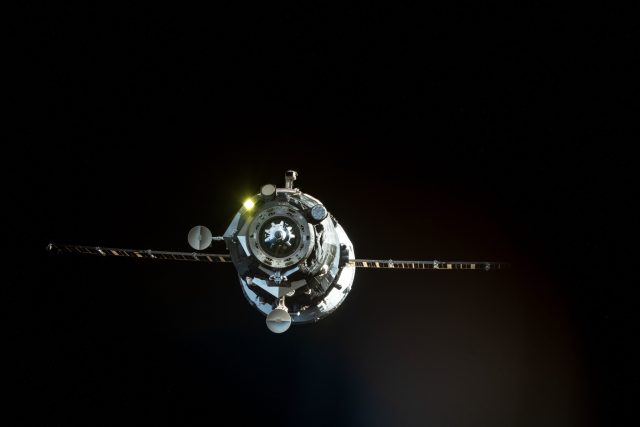
Credit: NASA
Around these parts, the usual response to a foul smell is a glance in the dog’s direction. But when you’re in a tiny space station orbiting the Earth, a bad odor is particularly worrying, as astronauts on the International Space Station found out in November.
When the Russian cargo craft docked with the ISS, the Russian cosmonauts that opened the hatch were greeted by a wave of stink. The “toxic” smell was so bad that the Russians immediately shut the hatch.
Ultimately, the astronauts crewing the ISS were not in danger, and after some extra air scrubbing, the hatch was opened and the supplies unloaded.
9. What I learned when I replaced my cheap Pi 5 PC with a no-name Amazon mini desktop
Two cheapo Intel mini PCs, a Raspberry Pi 5, and an Xbox controller for scale. Credit: Andrew Cunningham
One of the fun things about working at Ars Technica is watching Andrew Cunningham stretch the limits of obsolete or inexpensive hardware and software. His attempt to use a Raspberry Pi 5 as a daily-driver desktop had mixed results, but that didn’t stop him from trying out a couple of sub-$200 PCs from Amazon.
Andrew ultimately settled on the $170 Bostgame B100 and $180 GMKtec NucBox G2. Both of them used Intel Processor N100 quad-core chips and could run Windows 11 along with some Linux distros. If you’re curious about what it’s like to use a tiny, inexpensive desktop for your daily computing needs, check out Andrew’s write-up.
8. Users ditch Glassdoor, stunned by site adding real names without consent
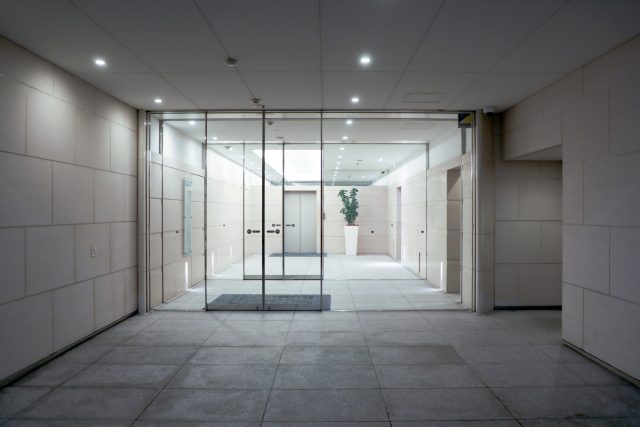
Complaining about your employer online is a time-honored tradition. Frustrated workers vent all over the Internet, but the hub of employee griping has historically been Glassdoor. That changed for a lot of folks when Glassdoor inexplicably decided to link real names to formerly anonymous accounts.
When Glassdoor acquired the professional networking app Fishbowl in 2021, every Glassdoor user was also signed up for a Fishbowl account. The big difference is that Fishbowl requires identity verification, so Glassdoor changed its terms of service to require the same.
“Since we require all users to have their names on their profiles, we will need to update your profile to reflect this,” a Glassdoor employee wrote to a user named Monica, reassuring her that “your anonymity will still be protected.” Monica did not trust the company’s assurances that it would go to court to “defeat requests for user information,” instead requesting that Glassdoor delete her account entirely. She wasn’t the only one.
7. What’s happening at Tesla? Here’s what experts think.
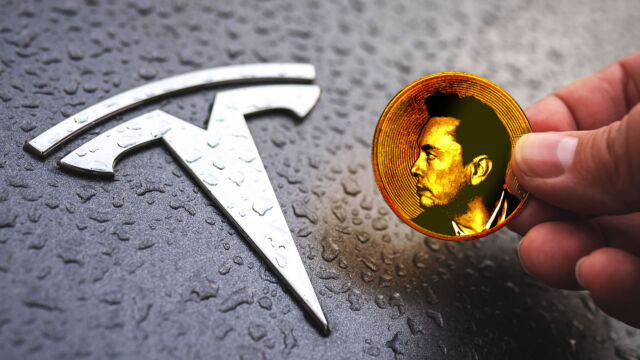
Credit: Aurich Lawson | Getty Images | Beata Zawrzel
Tesla is responsible for two things: making electronic vehicles a realistic option for most drivers and helping make founder Elon Musk the world’s richest person. But after years of astronomical growth, Tesla has been on a downward slide. The Chinese market has gotten much tougher for Tesla—and everyone else—due to Chinese OEMs churning out low-cost BEVs. There have been safety problems with Tesla, and the company’s once legendary profit margins have crated to below industry average.
What’s going on? Our crack automotive reporter Jonathan Gitlin talked to some experts to see if Tesla was primed for a turnaround or if its slump was indicative of more troubles to come.
6.The Starliner spacecraft has started to emit strange noises
Boeing’s Starliner spacecraft is seen docked at the International Space Station on June 13. Credit: NASA
It all started with some weird sounds. “I’ve got a question about Starliner,” astronaut Butch Wilmore radioed down to Mission Control at Johnson Space Center in Houston in late August. “There’s a strange noise coming through the speaker… I don’t know what’s making it.”
While that space oddity turned out to be just a weird anomaly, it may have helped prepare Wilmore and fellow astronaut Suni Williams for the bad Starliner news that followed—and an extra-long stay in orbit.
5. Here’s what it’s like to charge an EV at Electrify America’s new station
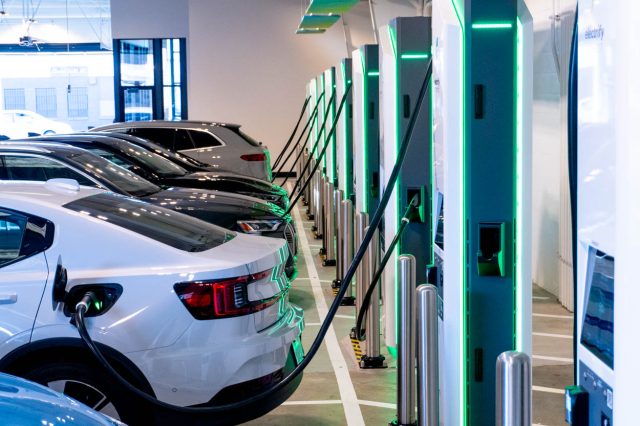
Credit: Roberto Baldwin
I’ve been an EV owner for five years. During that time I’ve been exposed to just about every facet of EV ownership, including charging on road trips. With the right combination of apps (shoutout to PlugShare) and planning, road trips should be problem-free. But sometimes chargers are few and far between, out of service, crowded, or just plain janky.
Out of all the charging networks—and I’ve tried almost all of them at some point—Electrify America has been the most reliable for me. Their new flagship charging station is a far cry from their outposts typically located at the far end of a giant parking lot connected to a Walmart or Meijer. Instead of aimlessly wandering the aisles of a big-box retailer, drivers can chill in a well-appointed and secure space while their cars are topped off with electrons.
Want to increase EV adoption? Get more of these working, secure, and well-lit stations up and running ASAP.
4. Dell said return to the office or else—nearly half of workers chose “or else”
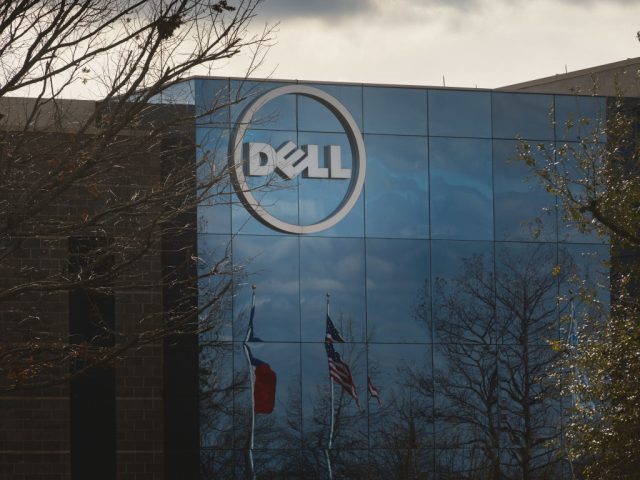
Credit: Getty
Ars has been all about the remote workforce since our launch in 1998. Once the COVID-19 pandemic hit, remote work became a thing for millions of workers. Some companies have adapted nicely to this new reality, realizing that their employees could do their jobs just as well from the comfort of their homes while pocketing some savings from a reduced office footprint.
Others have been less sanguine about remote work. Some have tried luring workers back to the office with perks, while others—like Dell—have been more coercive in their approach. The PC manufacturer told employees who stayed remote that they would be giving up on promotions or changing roles within the company. Internal tracking data showed that almost half of Dell’s workforce simply shrugged and stayed remote, consequences or not.
3. What I learned from using a Raspberry Pi 5 as my main computer for two weeks
The Raspberry Pi 5 inside its official case. Credit: Andrew Cunningham
We read about Andrew’s experience with a pair of sub-$200 desktop PCs, but this story is what started it all. The spec sheet looked promising enough, with support for two 4K displays running at 60 Hz and space for an internal PCIe SSD, but the experience was not what he’d hoped.
Andrew’s time using the Raspberry Pi 5 as his daily driver started out disappointing, but once he reset his expectations, he ended up pleasantly surprised by the experience.
If you’re looking for the cheapest mini desktop PC possible, you’ll want to look elsewhere, but if you want to see how far along Arm Linux has come, read Andrew’s article.
2. What happens when an astronaut in orbit says he’s not coming back?
The STS-51-B mission begins with the liftoff of the Challenger from Pad 39A in April 1985. Credit: NASA
Being strapped into a small space and thundered into space aboard a giant rocket has to be an incredibly stressful experience. But sometimes the stress doesn’t end with a successful launch. We don’t often get to peer behind the curtains and get a glimpse of the mental state of an astronaut, so when we do, it’s jarring.
“Hey, if you guys don’t give me a chance to repair my instrument, I’m not going back,” said astronaut Taylor Wang during a Space Shuttle mission in 1985. The first Chinese-born person in space, Wang was heading up an experiment on the behavior of liquid droplets in microgravity. When it didn’t work at the outset, Wang asked permission to troubleshoot it and make repairs. When Mission Control denied his request, he uttered that chilling sentence.
1. The surprise is not that Boeing lost commercial crew but that it finished at all
Boeing’s Starliner spacecraft is lifted to be placed atop an Atlas V rocket for its first crewed launch. Credit: United Launch Alliance
Not only has there been a lot of Boeing on this top 20 list, there has been a lot of Boeing in the news all year. And most of that news has been bad.
Eric Berger dives deep into the development of Starliner, outlining the problems and setbacks that plagued its development, trying to answer the big question of how a company like Boeing, which had been at the acme of crewed spaceflight for decades, fell so far behind competition that didn’t even exist 20 years ago?
Thank you for making Ars a daily read during 2024. May you and those you love have a happy and safe holiday season.
The 20 most-read stories of 2024 on Ars Technica Read More »
